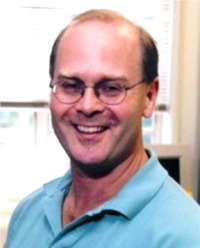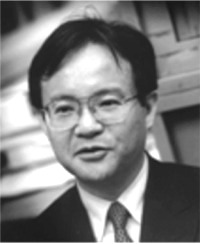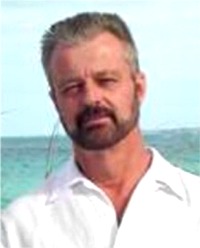|
Abstract:
This talk will focus on two research efforts that are aimed at developing
new robotic technology and algorithms to assist in the recovery of function
by patients suffering from neural deficits.
|
Dr Joel W. Burdick
is the Professor of
Mechanical Engineering and
BioEngineering,
California Institute of Technology. He is also the Option Representative for BioEngineering and the Deputy Director
of
Center for Neuromorphic Systems Engineering. He received his undergraduate degrees in mechanical engineering
and chemistry from Duke University and M.S. and Ph.D. degrees in mechanical engineering from Stanford University.
|
|
Abstract:
Even though the market size is still small at this moment, the applied fields of robots are gradually spreading
from the manufacturing industry to the others in recent years. One can now easily expect that applications of robots
will expand into the first and the third industrial fields as one of the important components to support our society
in the 21st century.
|
|
Dr Atsui Takanishi
is a Professor of
Department of Mechanical Engineering, Waseda University. He is also the concurrent Professor and one of the core members of
HRI
(Humanoid Robotics Institute, Waseda University). He received the B.S.E. degree in 1980, the M.S.E. degree in 1982 and
the Ph.D. degree in 1988, all in Mechanical Engineering from Waseda University. He is a member of Robotics Society of Japan
(a board member in 1992 and 1993), Japanese Society of Biomechanisms, Japanese Society of Mechanical Engineers, Japanese
Society of Instrument and Control Engineers and Society of Mastication Systems (a major board member from 1996 to current),
IEEE and other medicine and dentistry related societies in Japan. He received the Best Paper Award from Robotic Society Japan
(RSJ) in 1998, the ROBOMECH Award from RSJ and Japanese Society of Mechanical Engineers in 1998, the Finalist of Best Paper
Award in ICRA1999 from IEEE and RSJ in 1999 and the Best of Asia Award from BusinessWeek Magazine in 2001, JSME Distinguished
Research Activity Award in Robotics and Mechatronics in 2003, the Best Paper Award - Application in IROS2003 from IEEE and RSJ
in 2004, etc.
|
|
Abstract:
Wireless Sensor Networks represent the next evolutionary development step in
environmental monitoring, secure area assurance, intelligent machinery
maintenance, and utilities, home, and transportation systems automation. The
WSN is an extended and physically disconnected-body system that should, under
proper decision-making and control, behave as a single feedback organism.
Like any sentient organism, the WSN relies first and foremost on sensory data
from the real world. Sensory data comes from multiple sensors of different
modalities in distributed locations.
|
|
Dr Frank L. Lewis
is the head of Advanced Controls & Sensors Group,
Automation & Robotics Research Institute, The University of Texas at Arlington, Texas.
He obtained the Bachelor's Degree in Physics/Electrical Engineering and the Master's of Electrical Engineering Degree
at Rice University in 1971. He spent six years in the U.S. Navy, serving as Navigator aboard the frigate USS Trippe
(FF-1075), and Executive Officer and Acting Commanding Officer aboard USS Salinan (ATF-161). In 1977, he received
the Master's of Science in Aeronautical Engineering from the University of West Florida. In 1981, he obtained the
Ph.D. degree at The Georgia Institute of Technology in Atlanta, where he was employed as a professor from 1981 to
1990 and is currently an Adjunct Professor. He is a Professor of Electrical Engineering at The University of Texas
at Arlington, where he was awarded the Moncrief-O'Donnell Endowed Chair in 1990 at the Automation & Robotics Research
Institute. He is a Fellow of the IEEE, a member of the New York Academy of Sciences, and a registered Professional
Engineer in the State of Texas. He is a Charter Member (2004) of the UTA Academy of Distinguished Scholars and Senior
Fellow of the Automation & Robotics Research Institute.
|



